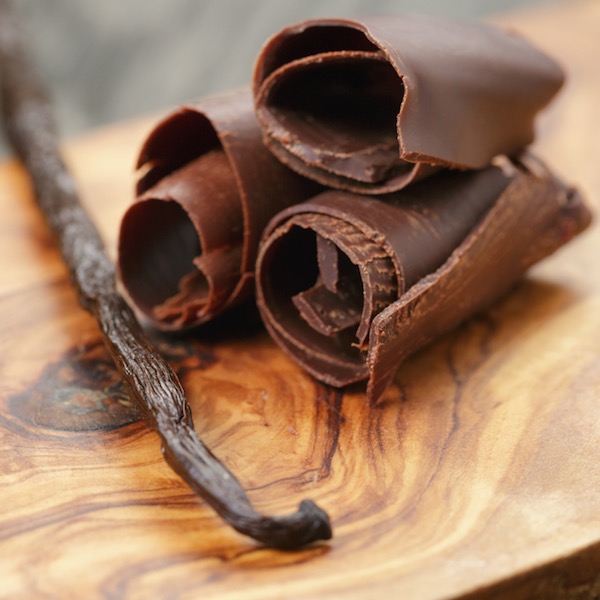Role of Vanilla in Chocolate
Vanilla has no botanical relationship with chocolate. Yet its flavour is so closely linked with chocolate that its absence would be quite noticeable. Take a look at the list of ingredients on the back of your favourite chocolate bar. Chances are you’ll see vanilla mentioned in one form or another – natural vanilla extract, natural bourbon vanilla bean, vanillin, etc. Even when it’s not explicitly mentioned, vanilla in chocolate is often bundled up under the blanket of nature identical and artificial flavourings. The association between vanilla and chocolate is not new. Legend has it that even the Aztecs ceremoniously drank a beverage of cacao beans, ground corn, vanilla and honey. Upon the Spanish conquest of the Aztecs, vanilla was brought to Europe where it was enjoyed by the wealthiest of the wealthy as a flavouring in their chocolate.
Vanilla enhances the flavour of chocolate by adding creaminess, balancing sweetness, and countering acidity and bitterness. Because cocoa beans from different batches can have different taste attributes, many industrial makers add vanilla in chocolate to mask these variations and make their product taste more consistent. Vanillin, one of the constituent flavour components in vanilla, has specific receptor sites in the human brain, making its taste easily recallable. Chocolate makers add vanilla to exploit this attribute of vanillin to reinforce brand recognition and loyalty. Vanilla-free chocolate is also available, particularly from independent bean-to-bar chocolate makers, who argue that mass-produced chocolate contains less cocoa and uses artificial vanilla to mask its poor quality. While some chocolate connoisseurs see the addition of vanilla as simply an issue of style rather than quality, others advocate chocolate without vanilla as they feel it reveals a much greater panoply of authentic, undiluted taste nuances.


